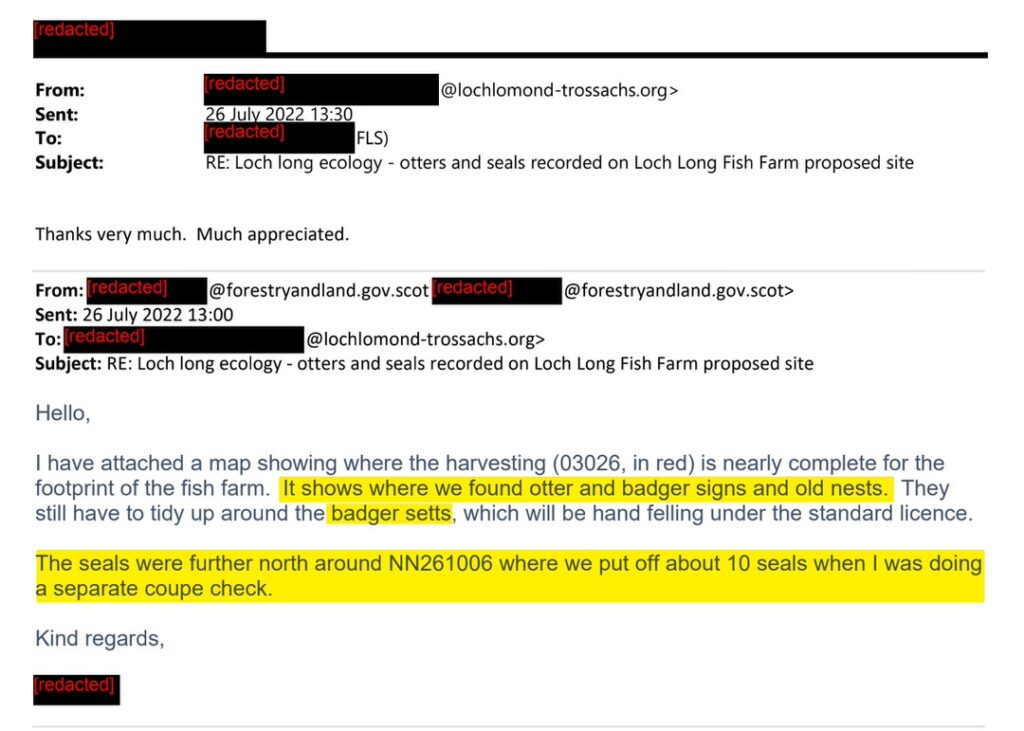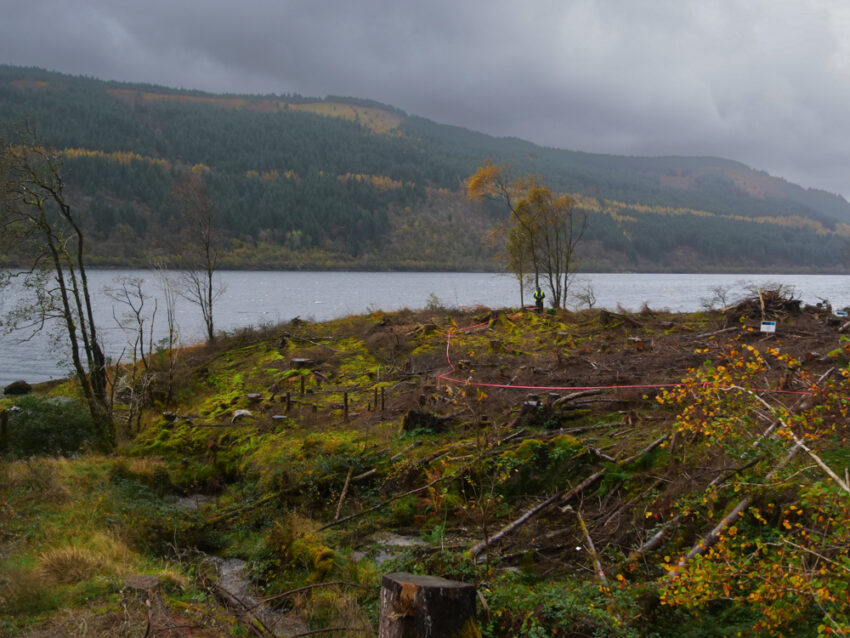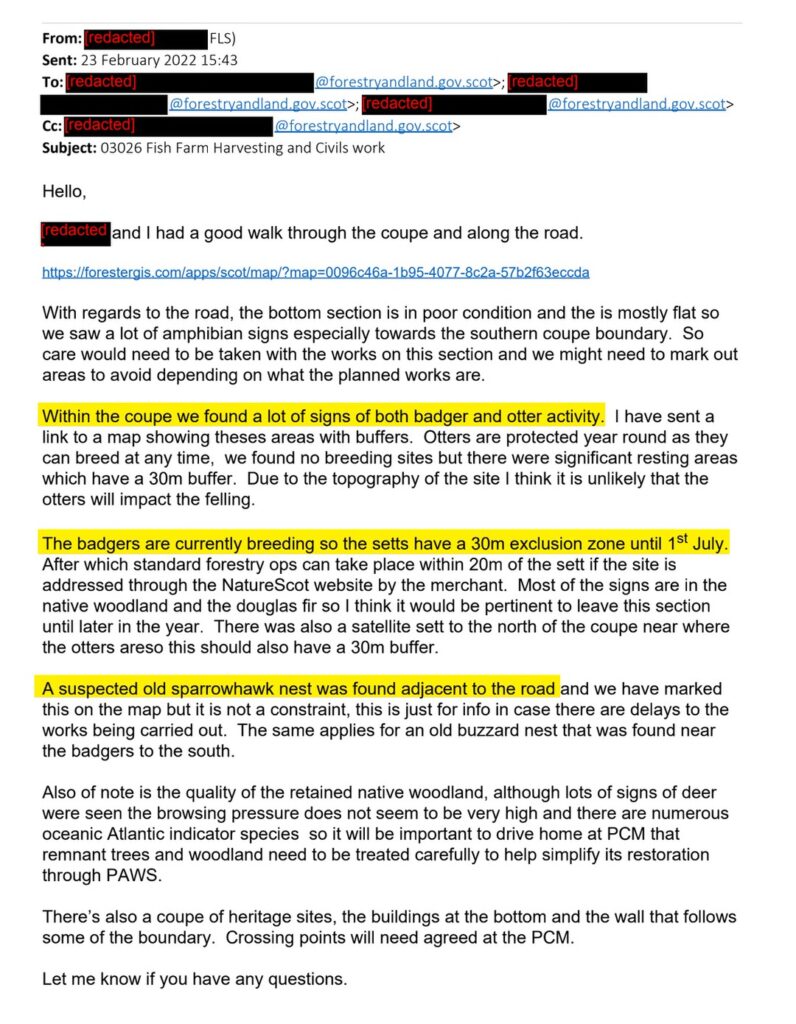AFFtheClyde this week defended the decision by the board of Loch Lomond and the Trossachs National Park to refuse planning consent for what would have been Scotland’s largest fish farm after the company, Loch Long Salmon, launched a scathing attack on the Park planners.
In a press statement after submitting its planning appeal earlier this week, the multi-national start-up company said that the Park’s decision “was based on fear and lack of knowledge and understanding”. The statement continued “The National Park has no experience of handling this kind of application and, rather than listening to experts such as NatureScot, SEPA and Forestry & Land Scotland, who all said the project could go ahead, they based their view on a misunderstanding that our plans were the same as existing open net salmon farms. This is fundamentally flawed”.
Hilary Worton of local group AFFtheClyde, whose members are made up of residents from around Loch Long said “ One would not expect Planning Departments, Councillors or Board members to be expert in the specific subject of any given planning application but one would expect them to take heed of expert opinion in that particular field, which, on this occasion, The National Park has done. In so doing it found that while this new technology certainly goes a long way to tackling the sea lice problem, it presents other potential dangers.”
“Given that the main rationale for refusal by the National Park was ‘that the development did not meet its aims which are to conserve and enhance the natural and cultural heritage of the area; promote the sustainable use of the natural resources and to promote sustainable social and economic development of the area’s communities’, an industrial fish farm, which would be the largest in Scotland, would be incompatible with these aims.”
“The claim that the technology had been successfully tried and tested is, at best, questionable. A trial of this new aquaculture system by Cermaq Canada was stopped after a technical fault reduced water quality, resulting in fish mortality.”
“There are also issues associated with the claimed 85% collection of solids, the discharge of nitrogen and phosphorus containing nutrients, very high stocking densities that are specified (most likely to maintain an anticipated return on investment), husbandry issues and very high possibility of odour problems. All these issues lie with the regulator to manage and SEPA has already shown itself to be less than thorough in this area. Experts consider that the claimed 85% collection of wastes is a gross overestimate of collection efficiency and that only 50%, if that, is collected. Any failure to collect 85% would mean that the operation would exceed SEPA environmental quality requirements and grossly contaminate the seabed of the loch. No trials have been conducted anywhere to demonstrate that such claimed collection efficiency is possible. Not only that, this collected sludge will be difficult to handle on land requiring dewatering and is very likely to create an odour issue. There is no indication in the proposals that the on-land handling equipment is up to the job.”
“In design terms it is considered unlikely that the plastic outer skirt would survive in strong wind and turbulent swell conditions, seemingly confirmed by the incident last year in Sognefjord, Norway where a semi-closed containment salmon farm was damaged in a storm causing a fuel spill. While the Loch Long site may have been specifically chosen for its relative shelter, our changing climate is producing extreme weather events on a regular basis. The head of Loch Long with its restricted flushing of headwaters is an entirely inappropriate location for such a large aquaculture development”
“Loch Long Salmon have said that the technology being proposed is endorsed by the Atlantic Salmon Trust (AST) and Scottish Wildlife Trust (SWT). AST has stated on its website that they were contacted by Loch Long Salmon and “We did not express any form of formal support for this development or its planning application”. SWT has also stated that “We do not endorse any specific proposal”. Contrary to LLSC stating that “the plans are supported by the closest community council”, the Beinn Reathe site falls within the boundary of Loch Goil Community Council, who failed to come to a decision whether to support or oppose the plan.”
“The ’theoretical impact” Stewart Hawthorne mentions on the environment is by no means theoretical. Under a Freedom of Information request submitted by AFFtheClyde to Forestry and Land Scotland, an FLS ecologist confirmed the presence of otters, badgers and seals at the proposed site as well as evidence of red squirrel and sparrow hawks.”

The site of the Beinn Reathe industrial fish farm was gifted to the community for ‘public recreational use’ by Archibald Cameron Corbet. At the time the Glasgow politician and philanthropist said “While I would not object to the erection of simple cottages, I should greatly repel anything being done which would disturb the naturalness of such scenery”. Who could have imagined that in 2023 our communities would be fighting to save his precious Ardgoil peninsula from an industrial fish farm.


